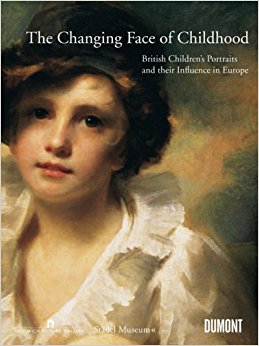Inspiring Older Readers
 posted on 17 Mar 2017
posted on 17 Mar 2017
The Changing Face of Childhood: British Children’s Portraits and their Influence in Europe
This book was produced jointly by Dulwich Picture Gallery and the Städel Museum as a catalogue to accompany a travelling exhibition that took place in July 2007 in Germany and November of the same year in Dulwich, England. It is, in its own right a sumptuous production – the quality of the reproductions of the artworks is very high quality and benefits from the decision to produce it in a large folio format. However, what lifts the book ( and the concept of the exhibition itself) above the ordinary are the ideas and issues that lie behind it.
The concept of ‘childhood’ is one we very rarely stop to question – we assume we know what the characteristics of childhood are and we take as read that we can distinguish a good childhood from a bad one. However, just a few moments spent trying to actually define and articulate what we mean by childhood should be enough to demonstrate that our confidence is probably misplaced. In truth what we think of childhood and what it means to be a child constantly moves and metamorphoses into different things in different times and in different social circumstances. What history shows us clearly is that our ideas about childhood have been constantly evolving and that this process of change is driven by changes in philosophy, politics, economics and the ‘new’ sciences like psychology or sociology.
Art, in the form of paintings and sculpture, can act like a sort of road map to these changes – showing us in pictorial or concrete ways how we wanted to represent our feelings about childhood at different points in our history. We can think of paintings in this context as little parcels of social information allowing us a brief but privileged overview of a society’s beliefs and attitudes.
What this collection of paintings has been pulled together to illustrate is what the essayists who provide the text for this publication think of as a key moment of change in our ideas about childhood – the dawn of the 18th century Enlightenment and the impact of Romanticism in the early 19th century. The proposition being illustrated by a wonderful selection of paintings from across Europe is essentially that this period represents a crucial moment of change in our ideas and beliefs about childhood when we moved from thinking of our children as simply ‘little adults’ to the idea that there is a defined and special period of our lives called ‘childhood’.
What makes this book such a pleasure isn’t simply the wonderful reproduction of the artworks but the intelligent curation of the collection – bringing these paintings together and marshalling them into a visual argument for the case has been done superbly here. Many of these paintings are ones you might see in altogether different contexts, dispersed amongst wider collections, and in such circumstances their significance might well be missed. But here they serve to drive home the well informed essays that explore the issues.
You can find copies of this book / catalogue online for anything between £20 - £30 but that’s a steal for anyone interested in this topic. Academic books (many of them considerably duller to read) on this topic do exist but you’re likely to pay double this price for them. So it’s a bargain …
Terry Potter
March 2017